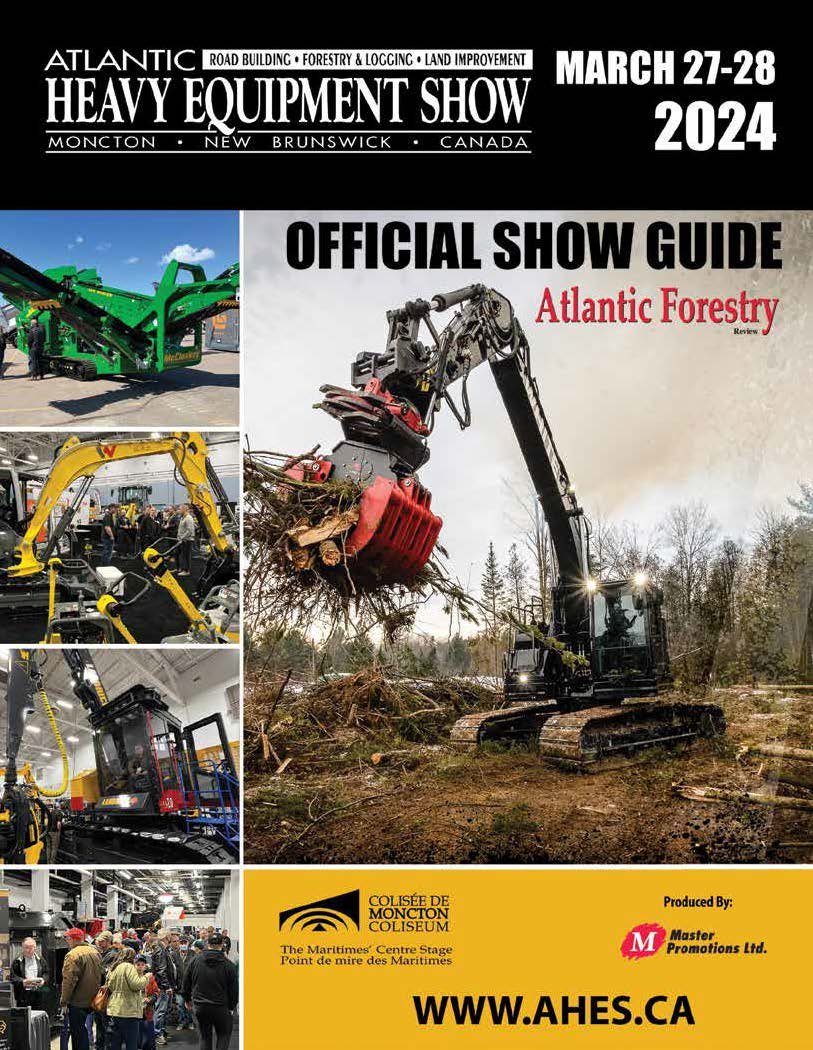Seven silviculture principles
Fundamental concepts to guide treatments in mixed and hardwood forests
by Gaetan Pelletier When managing forests to generate value through the production of timber, it is becoming more and more important to base our silviculture prescriptions on scientifically sound concepts and theory. There are a few key biological processes that should guide forestry activities intended to influence establishment, growth, composition, health, and quality of stands. In this article, we will revisit seven basic principles that must be incorporated into our treatment prescriptions and communicated to those who do the actual work.
A very unhealthy Sugar maple stand, in which more than three quarters of the trees are of unacceptable growing stock. (NHRI photos)
1 – Some tree species have more monetary value. Be aware of the great value difference from one species to another. Too many modern “management guides” are quick to advocate practices that promote species richness first and foremost. Simply put, value is a result of the product mix of an assortment of trees, and their respective market values. For example, Red maple and beech only yield five to 10 percent saw logs, and the value of the lumber is half that of Sugar maple or Yellow birch, which yield 20 to 25 percent saw logs. This represents a considerable four-fold or five-fold difference in value. Silviculture is a means to grow species of interest, to increase the value of the woodlot.
2 – Tree size has a direct impact on value and growth rate. Larger trees – up to a point – tend to have a higher proportion of high-grade products. However, as a tree ages, it eventually loses vigour and value. As they keep growing, larger trees (DBH > 50 cm) add more discoloured wood volume than clear wood volume. Consequently, stem quality declines in larger trees, saw log recovery diminishes, and timber value (per cubic metre) sharply declines in trees larger than 45 to 50 centimetres at breast height. As a tree increases in diameter, so does its growth rate (in diameter and basal area), until it starts to peak. The threshold is dependent on many factors, such as species and competition for resources. The growth apex for our northern species occurs around 40 to 50 centimetres DBH. Barring other important ecosystem objectives – such as protecting wildlife habitat and diversity – land managers should aim to retain a relatively low proportion of large trees, if they wish to sustain high growth rates.
3 – Competition also impacts rates of stand and tree growth. The effect of tree size on growth rate is compounded when we consider the additive factor of stand competition. At least in the case of Sugar maple and Yellow birch, the more the stand is open, the greater the growth rate of residual trees. (See Figure 1: Interactions between species, tree size, and growing space on individual-tree growth rates.) This does not offset the fact that larger trees grow the least. The natural reflex to be on the safe side – by leaving more than enough basal area after treatment – may not be the best thing to do. It’s important to remember this when deciding which individuals to leave as crop trees.
4 – Tree vigour impacts stand and tree growth rates. In order to determine the right silvicultural regimes, considerable attention must be paid to assessing tree quality, health, and vigour. Tree health is an important element of quality and grade, but very few jurisdictions systematically characterize trees accordingly. Vigour takes into account tree health as well as competition for light and other resources. Maintaining good growth rates requires a high proportion of vigorous trees; at harvest, removing unacceptable growing stock should be a top priority.
The choice of harvesting system and trail pattern impact logging debris and germination substrates.
5 – Residual basal area impacts stand growth and regeneration dynamics. There is very strong evidence of a narrow range of residual basal area for optimal growth of crop trees. (See Figure 2: Relationship between percent removal and the number of saplings by species after 20 years in Northern New Brunswick.) In mixed and hardwood stands of our region, basal area growth can reach a high of 0.8 square metres/hectare/year. For optimal stand growth, the ideal residual basal area is between 14 and 18 square metres/hectare. Leaving more basal area after treatment will cost in growth, but leaving not enough will deplete the growing stock and encourage the establishment of intolerant and pioneer species. Controlling the harvest intensity (percent basal area removed) is important in the recruitment of new cohorts of desired species. Low residual basal area may also promote epicormic branching, thus reducing grade and quality. Leaving non-competing “trainer trees” will discourage this. As a rule of thumb, a residual basal area of 16 to 20 square metres/hectare of trees larger than 10 centimetres (DBH) is appropriate for most partial cuts.
6 – Crowns of crop trees, small and large, must be released. Simply reaching the target average basal area in the stand is not adequate, as a certain uniformity in the distribution of crop trees is needed. The crowns of crop trees need to be released by removing direct competition. This gets a bit more complicated when using mechanical harvesting systems, where extraction trails are a necessity. Trails need to be factored in, and the ratio of trails to green strip must be considered. In regulated treatments such as commercial thinning and single-tree selection, the ratio in trails should be less than 25 percent. Furthermore, trees in the green strip should be evenly spaced, their crowns released from the edge of the trail to the extent of the boom reach.
7 – Harvest season, system, and trail network greatly impact the creation of substrate for germination and establishment of regeneration. In harvest-based silviculture treatments in which one of the goals is to establish a new cohort of trees, timing is critical. Late-winter operations, under a heavy snow cover, are not likely to benefit from soil mixing from the tracks of the machines. Apart from that, plan your trail network to increase the number of seed germination beds. It may be beneficial to harvest in the dormant season (fall and winter), when residual trees are less prone to mechanical damage, but not if the species targeted for removal regenerate by means of root suckers and stump sprouts – i.e., poplars, Red maple, and beech.
CONCLUSION Plan your treatment according to these basic principles, and formulate a prescription that identifies the residual stand density, the season and the trail network to use, and details concerning what trees to cut and how many to retain. These instructions must speak in terms of species preferences, size distribution, tree quality, and crop tree release.
(Gaetan Pelletier is the executive director of the Northern Hardwoods Research Institute in Edmundston, N.B.)



















